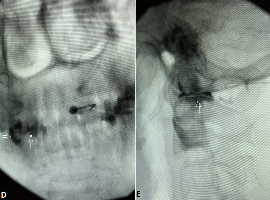Yakov Perper*
Department of Anesthesiology, Mount Sinai Hospital of Queens, Queens, NY, USA
*Corresponding author: Yakov Perper, Department of Anesthesiology, Mount Sinai Hospital of Queens, Queens, NY, USA, E-mail: yperper@universalpainmanagement.nyc
Received: February 05, 2021; Accepted: February 13, 2021; Published: March 24, 2021
Citation: Yakov Perper, et al. Rare Examples of the Space of Okada Spread. Clin Image Case Rep J. 2021; 3(3): 146.


